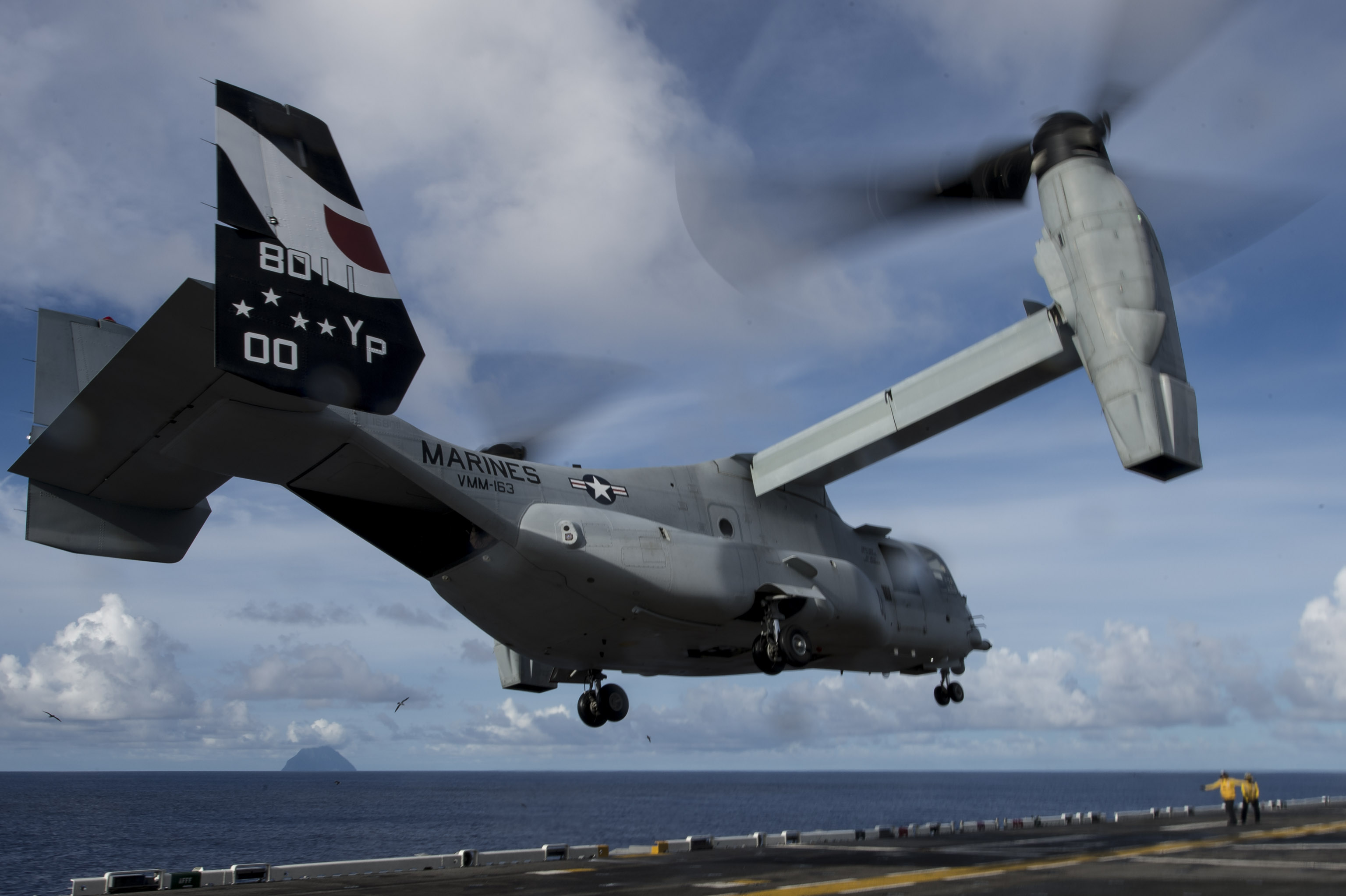
NATIONAL HARBOR, Md. — The senior officer responsible for 40 percent of the aircraft in the Navy and Marine Corps inventory said because “there was a real-world need” for MV-22 Osprey and newer AH-1Z Viper and UH-1Y Venom helicopters, the Department of the Navy is just now catching up on maintenance of the fleet.
Speaking Wednesday at the Navy League’s Sea-Air-Space Exposition, Rear Adm. Dean Peters, program executive officer of Air ASW, Assault and Special Mission platforms, said that meant sending the aircraft back to the manufacturer for repair, both time-consuming and costly.
The situation is changing now. “The fleet can repair” its aircraft and so can the Marines in the field.
“Simple things,” such as updating technical maintenance manuals, are making the difference in who and where the maintenance and repairs are done.
Peters asked industry attendees in the audience to share information on “where the troubles are” to speed repairs and also to help eliminate those problems in the manufacturing stage. There are 253 Ospreys in the Marine Corps inventory.
When asked whether the Navy was considering an antisubmarine warfare model of the V-22, he said, “Right now we’re just focused on buying the aircraft for the Navy. It’s being considered a logistics platform.” The Navy is ordering 44 CMV-22 aircraft with delivery beginning in 2018.

He said there will be 300 Yankee and Zulu models of the H-1 in the Marine Corps inventory. “That’s a lot of light and attack aircraft for the Marine Corps. We are starting to really step through the program.”
While automation “is the wave of the future” in aviation, Peters said, “all of our platforms [under his control] are manned platforms.” But he said that could change as the future vertical lift program advances.
“Readiness is improving” with the CH-53E helicopter, but the K model is “our big development program.” Peters said the first four of the 200-aircraft buy are flying. The goal is to have the aircraft capable of 27,000 pounds of external lift carrying cargo over 110 nautical miles.
Peters said, “The hottest program” among tactical aircraft is the KC-130J, but only two are being bought per year although versions of the defense authorization bill allowed a larger buy. “We’re going to be in production with this aircraft for a long time.” So far 49 have been delivered.

ZHaving been earlier in his career involved with the presidential helicopter program, Peters said, his office “continues to support legacy aircraft. They do need to be replaced.” Earlier starts were terminated in 2009 over costs exceeding $13 billion and delays in meeting goals.
For the replacement, VH-92, Sikorsky, which was awarded the contract two years ago, “is doing exceptionally well.”
He said the surface life extension program plans for the E-6B, heavily modified Boeing 707s, will extend their flying hours from 27,000 to 45,000 and keep the aircraft in the inventory out to 2040.





